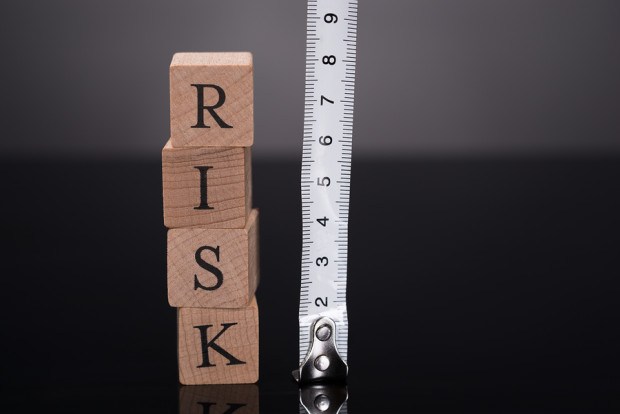The costs of natural and manmade threats could put at risk $4.6 trillion of the total projected GDP of 301 of the world’s major cities between 2015 and 2025, according to the findings of the Lloyd’s City Risk Index.
Rolled out internationally last week by Lloyd’s, the study is based on original research by the Cambridge Centre for Risk Studies at the University of Cambridge Judge Business School. Lloyd’s said it has produced this index to help increase the understanding of, and shape the world’s response to, the shifting risk landscape.
The Lloyd’s City Risk Index is designed to be a wake-up call, showing that “trillions of dollars of projected economic output are at risk from manmade and also natural disasters…Some of [those natural disasters] we haven’t seen, but they will be happening in the future,” said Lloyd’s CEO Inga Beale.
The index can be analyzed by location and 18 types of natural and manmade threats, with data available on each of the 301 cities, which were chosen because they represent 50 percent of the global GDP, Lloyd’s said. More in-depth analysis is available for 50 of the largest locations. Case studies for each threat analyzed real-world disasters as well as their social and financial consequences.
“We live in a truly international society where financial, manufacturing and food systems are linked and wealth is concentrated,” said Beale. “This is driving greater efficiency but also makes us more exposed to systemic shocks with far-reaching (and often unconsidered) consequences.”

Shifting economic wealth and urbanization has concentrated high-value assets in cities where adequate risk mitigation and resilience may not yet have developed at the same pace as the development of infrastructure in these cities, she said at last week’s launch event.
In addition, Beale continued, there are new and emerging threats that pose an increasingly significant risk to economic growth in both emerging and developed markets, such as cyber attacks, human pandemics and plant epidemics.
(The 18 risks identified by the Lloyd’s City Risk Index are cyber attack, drought, earthquake, flood, freeze, heatwave, pandemic, market crash, nuclear accident, oil price shock, plant epidemic, power outage, solar storm, sovereign default, terrorism, tsunami, volcano and windstorm.)
The index is intended to “stimulate discussion with governments, insurers, businesses and communities so that we can all together collaborate and reduce the exposure and improve resilience, particularly in these cities,” Beale affirmed.
“It’s vital that we get this right. At stake is business and community resilience, the protection of valuable assets, and future global and economic growth.”
Insurance is part of the solution because it provides essential capital injections after a catastrophe, she said. “Investment in risk management measures, including increasing insurance take-up, could mitigate the economic losses associated with all of these threats—both manmade and natural.”
In the executive summary of the Lloyds City Risk Index, Beale noted that Lloyd’s research shows a 1 percent rise in insurance penetration translates into a 13 percent reduction in uninsured losses and a 22 percent reduction in taxpayers’ contribution following a disaster.
“Insurance also improves the sustainability of an economy and leads to greater rates of growth—a 1 percent rise in insurance penetration leads to increased investment, equivalent to 2 percent of national GDP,” she continued. “Insurance de-risks governments, business and communities. It takes the financial burden of recovery off the taxpayer and boosts economic growth.”
Global Systemic Threats Increasing
During her presentation, Beale discussed three of the “mega-trends” that are leading to increased global systemic threats.
The first is the changing balance of economic power shifting from the traditional established markets of the west to the “vibrant, dynamic, emerging economies of the rest,” she said, noting that by 2030, the E7 economies will be bigger than the G7 are today.
The second big trend is urbanization. There are three times the number of mega-cities in the world than there were in 1990, and by 2030, there are going to be 41 urban agglomerations projected to house at least 10 million inhabitants each, she said. “These cities are going to be the engines of economic growth going forward. And we’re going to see this growth in urban centers like we’ve never seen it before.”
The third mega-trend is technology, which is driving change at an incredible rate, disrupting existing business models and allowing innovation to flourish right across the world. Beale pointed to the example of Uber, which is the world’s largest taxi company with no vehicles and at the moment no drivers. “Uber didn’t exist five years ago, but now it’s worth about $50 billion and it’s bigger than 405 of the other companies in the S&P 500.”
These trends are delivering huge benefits to economies and businesses by increasing efficiency and opening up access to international markets, she said. “But they’re also leaving us open to some systemic shocks that perhaps we didn’t have existing before. That same interconnectivity across the world that drives growth and efficiency also makes financial markets more vulnerable to events in all parts of the world.”





















 Pennsylvania Issues ‘Expectations’ for Carriers Regarding AI Use
Pennsylvania Issues ‘Expectations’ for Carriers Regarding AI Use  That Insurance Talent Crisis? It’s a Global Knowledge Opportunity
That Insurance Talent Crisis? It’s a Global Knowledge Opportunity  Ford Recall of 43,000 SUVs Due to Fire Risk Won’t Remedy Gas Leaks
Ford Recall of 43,000 SUVs Due to Fire Risk Won’t Remedy Gas Leaks 






